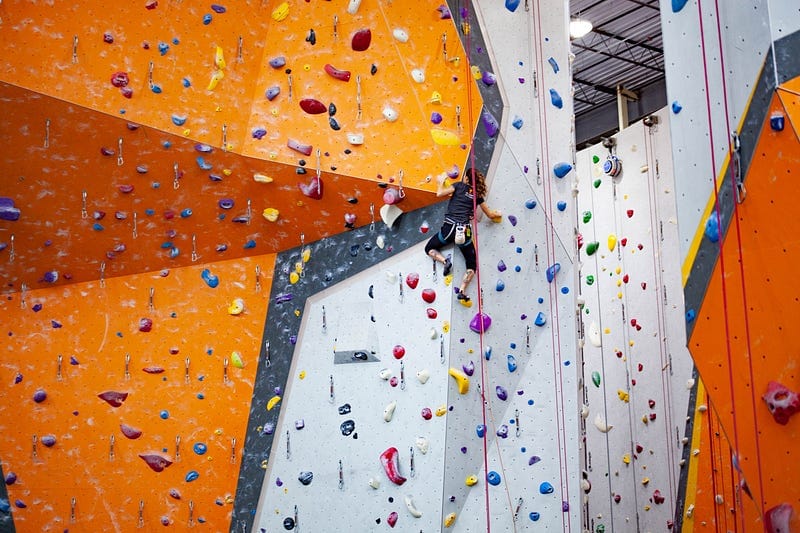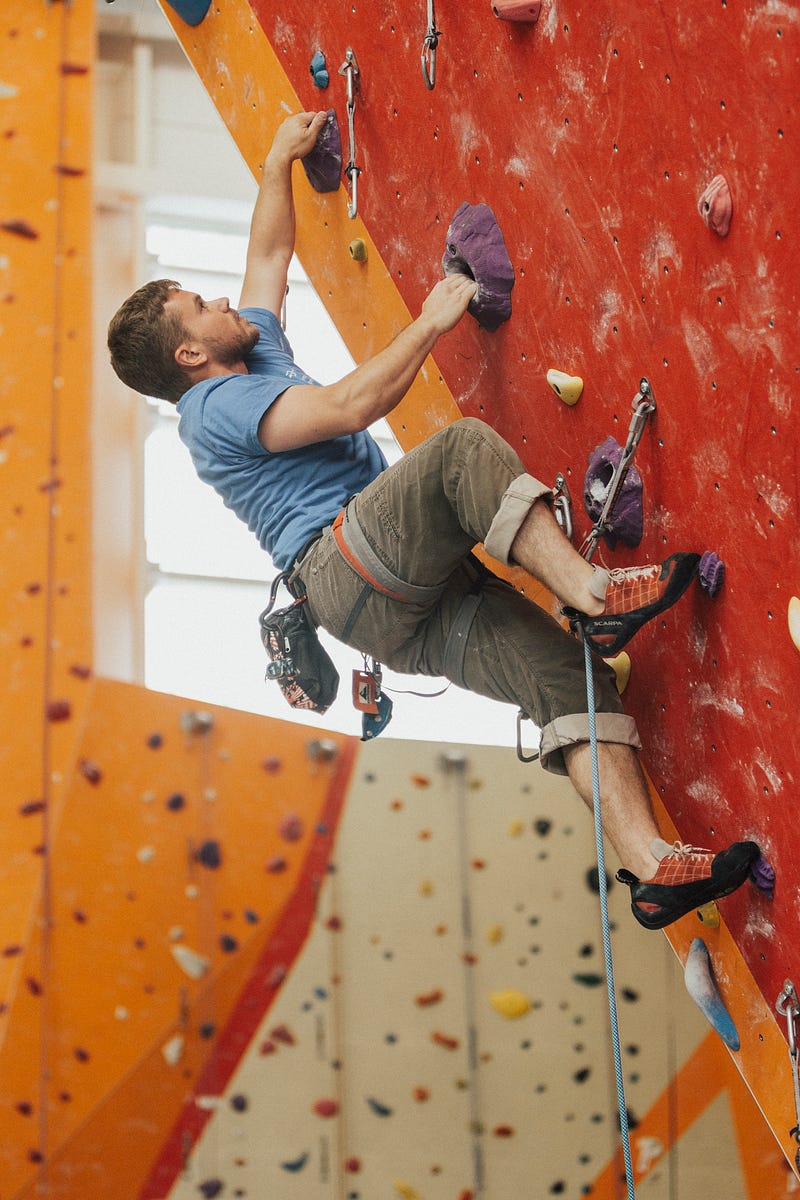Climbing is the Perfect Workout Sport for Gamers
I can’t be the only one who thinks that sending a project feels like achieving a milestone

Ah, climbing…
One of the few sports that is commonly associated with outdoorsy types who want to take their hiking and rock scrambling to the next level. A membership at a climbing gym is typically around $100/month and often comes with access to free yoga classes and gym equipment. There are typically events that happen every now and then, and often perks to those with memberships to invite friends to visit for free.
Before I go into why I think climbing is the best workout sport for gamers, I will first give a crash course to explain all of the “must-know” terminology. I’ll explain what the 3 most common types of rock climbing are as well as the 2 climbing grade systems that are used in gyms across the United States.
Climbing Crash Course
Bouldering
When you typically think of rock climbing on a climbing wall, most people would think about bouldering. The maximum height of a bouldering wall is around 10–14 feet, and there is ample padding on the ground to keep any falls as safe as possible. The grading system follows a V0-V12+ scale. Beginners will start off working on V0-V2 problems, and intermediate climbers will work on V3-V5 climbs. Some gyms may even have V-Intro climbs that typically contain jugs and are placed on a straight vertical wall.
Jugs are a specific type of hold and are one of the easiest holds to use. Other holds include “pinchers” (where you will need to pinch with two fingers), “slopers” (these holds don’t have easy gripping, and you’ll need to rely on more surface area), and “crimpers” (these involve using the tips and front segments of your fingers).
To me, bouldering is quite difficult as climbs that involve overhang are introduced at a lower level. I sometimes feel like I need to level up certain aspects of my character stats before I am able to successfully complete more difficult climbs.
Top-Rope
I’m currently belay certified, which means I can belay someone else who is climbing Top-Rope. This type of climbing involves having a belay partner who is harnessed to the rope with a device, usually a Gri-gri, while the climber is also harnessed to the rope and tied in with a figure-8 knot.
Top-Roping involves climbing up a much taller wall, so it requires a lot more endurance than bouldering. Typical Top-Rope climbs involve easier holds, although some involve slopers and crimpers — at increased frequencies with more difficult climbs.
Sending a Top-Rope problem without any breaks is typically the goal when it comes to successfully completing a climb. At the start, I may require breaks as I think through some portions of the climb when it comes to my “beta” or climbing path.
Lead Climbing
The way I like to describe lead climbing is to take top-rope and bouldering and add them together. Imagine bouldering with a rope and clipping that rope to various carabiner hooks that hang at various checkpoints up a wall.

Lead climbing involves a belay partner. However, both the climber and the belayer need to undergo training and pass a test before “leading”. In order to lead climb, a climber must be comfortable with 5.10a-5.10c top-rope climbs. This type of climbing gives both the thrill of bouldering up a tall wall with the safety of a rope.
Why is it perfect for gamers?
Now that you know what climbing entails, it can be easy to see that the different types of climbing can be mapped onto a skill tree. Different character stats need to be indexed in order to level up and improve at each type of climbing. Bouldering, top-rope, and lead climbing all use the same fundamental skills but require very different levels of endurance, upper-body strength, and stamina.
To all the gamers out there, I hope you take the chance to try climbing if a climbing gym is near you. It’s quite a fun sport, and I don’t regret starting at all.